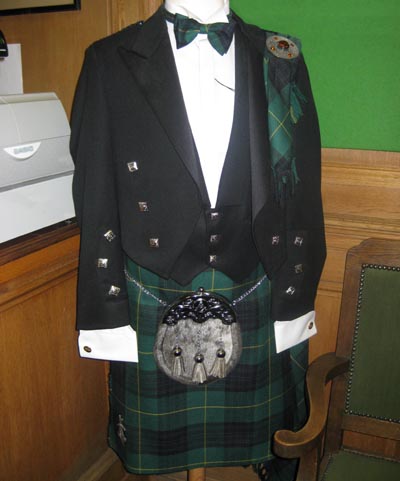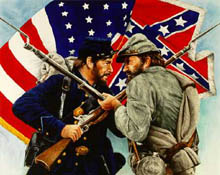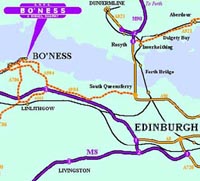|
scottish lodge, pythagoras, and douglas lodge 409 |
||
|
|
||
|
|
Scottish Lodge, Pythagoras, and Douglas Lodge No. 409 Lost Lodge of Pythagoric Brother Tony Hamilton in Bo'ness, Scotland reported on his lodge, created in 1759 and associated with Pythagoras, the Greek mathematician and founder of a secret society. The
simple story of Lodge Pythagoric is a small chapter of Masonic history
within central Scotland, at the often forgotten port of Bo'ness. It also
delves deeper into the origins of the craft and the historic significance
of Pythagoras. The
bold step of establishing The Grand Lodge of Scotland in 1736 witnessed the
reaching out to the already established lodges in the country; encouraging
the uniformity and promotion of freemasonry, widely recognised as laying the
foundation for structured freemasonry across the globe. Less
well known is that structured freemasonry was established in Bo’ness in
1759, the date that Lodge Pythagoric numbering 90 on the role of The Grand
Lodge of Scotland was chartered. It
is argued that Lodge Pythagoric represents one of the most challenging and
influential phases in the growth of Scottish freemasonry, prompting The
Grand Lodge of Scotland to recognise the diversity associated with the port
of Bo'ness and its Masonic transience. At
that time Bo'ness represented a multi-cultural and eclectic mix, less
common to these shores at that time; when Edinburgh, under the guidance of
Bro. George Drummond was still perceived to be finding it’s feet
internationally (relatively speaking). With
strong Pan-European connections and many brethren embracing our shores, it
has been mooted that the freemasonry network emanating from Greece, France,
Italy, Germany and Holland did not sit comfortably with the aims of the
newly formed Grand Lodge of Scotland. When
indeed the brethren of Bo’ness presented the name 'Pythagoric' to The
Grand Lodge of Scotland it was significant enough to raise a number of
questions surrounding the Greek foundation, and why it should sit within the
Scottish framework. We
can only speculate about the choice of name and discussions at the time. But
simple Masonic research positions the value associated with the choice of
the Bo'ness brethren.
Pythagoras Pythagoras
of Samos was born between 580 and 570 BC, and was positioned as an Ionian
Greek mathematician and founder of the religious movement called
Pythagoreanism. Pythagoras
started a secret society called the Pythagorean brotherhood devoted to the
study of mathematics. This had a great effect on future esoteric traditions,
such as Rosicrucianism and Freemasonry. In
1640 AD John Reuchlin provided an anchored commentary of The Pythagoric
Doctrine, outlining his ways of teaching by silence and symbols. The
difficult and abstruse tradition of Mysteries and Symbols is not to be
investigated by human wit, but rather requires ample strength of thinking
and character, and above all things, faith and taciturnity. Whence
Pythagoras taught nothing to his disciples before silence; it being the
first rudiment of contemplative wisdom to learn to meditate and to unlearn
to talk. This
kind of learning brought forth the Pythagoric philosophy which concerns
divine things, expressed by enigmas and symbols. The ancients used to
deliver wisdom by allegories; all their philosophers and poets were full of
riddles, avoiding by this obscurity contempt of the. ignorant; for the most
apt interpreter of things not perceptible by human mindlessness, is Fable.
What is easily found is negligently pursued. Among Pythagoreans, the symbols and enigmas of their priceless study were a chain of indissoluble love. All became desirous of them to be known as Pythagoreans. They were also serviceable as memory notes; for in treating of all things divine and human, the vastness of the subjects required short symbols, as conducing to memory. Lodge Pythagoric Between
1759 and 1799 Pythagoric Lodge that was numbered 90 on the Roll of the Grand
Lodge of Scotland existed in the hearts of the Bo’ness brethren. Early
records show that freemasonry in Bo’ness was affluent at that time; in
that: …"from and after the 17th of July 1760 every brother upon being made a Royal Arch Mason in the Pythagoric Lodge shall pay dues thereto – five shillings". The
information alluded to earlier showed that some of the practices did not sit
with The Grand Lodge of Scotland, and the Lodge was declared dormant in
1799. Some ten years later it was erased from the Roll of the Grand Lodge of
Scotland. The
gap between this time and 1856-1860 sits within the current province of
Linlithgowshire but shows freemasonry still active within Bo'ness. When
The Grand Lodge of Scotland was approached between 1856 and 1859 to
re-instate Lodge Pythagoric, a unanimous 'No' was communicated, thus
sending Pythagoric to the history books. A
group of Bo'nessian Masons applied to resurrect the "Pythagoric"
Lodge in Bo'ness in 1860, but were refused permission by the Grand Lodge of
Scotland. However permission was granted on 5th November 1860 to open a new
Lodge, which gave birth to the Douglas Lodge, probably named after the
Hamilton-Douglas family. Douglas Lodge No. 409 On
Thursday 10th January 1861 the first meeting of the Douglas Lodge took place
at 7.30 p.m. in the Freemasons Tavern for the purpose of Entering
Apprentices. Significantly
13 Entered Apprentices were initiated on this date, the first of 80 to be
admitted that year. The
Douglas Lodge was indeed swelling its ranks; however it was not until 23rd
May 1861 that the Douglas Lodge received its official Charter from the Grand
Lodge of Scotland. Brother
William Spence (officially appointed as the RWM) and office bearers were
duly elected at a meeting on 28th May that year. In
the first 50 years of its existence the Douglas Lodge had no less that ten
different meeting places, therefore in 1908 a sub-committee was formed to
find a more permanent building or site suitable to build a Temple. The Lodge had a healthy cash reserve, and the current temple was built on land purchased from Brother Kilpatrick. Plans were quickly drawn up for the construction of the Temple for an estimated cost of £1,200. The
temple was designed by one of the most prominent architects of the time
(Matthew Steele) for a fee of £60 17s 0d. The
foundation stone for the 409 Douglas Lodge Temple sited in Stewart Avenue
was laid on 14th August 1909 by Provincial Grand Master Brother Robert
Kirk. Since that date, many a recognised freemason has graduated
from 409, with The Grand Lodge of Scotland benefiting its ranks. The
Douglas Lodge celebrated 100 years of the building of the current temple on
Friday 14th August 2009, rededicated by the Provincial Grand
Master of Linlithgowshire, Brother Kenneth L. Lindsay. In 2010 The Douglas Lodge will celebrate its 150 years, and will quietly recognise the 251 year history associated with Lodge Pythagoric, numbering 90 on the roll of The Grand Lodge of Scotland. Editor's footnote from Masonic history: During the 1700s, the Grand Lodge of Scotland strongly felt that Craft Lodges should focus on the first three degrees, not on higher degrees such as Royal Arch. In this they were aided by the promulgation of new laws in Great Britain requiring private societies such as Freemasonry to have their Grand Lodge or equivalent body vouch for the national loyalty of each member lodge. Any lodge not receiving that vouchsafe from Grand Lodge would be forced to disband or suffer the penalties of law. Since Lodge of Pythagoric No. 90 was working the Royal Arch degree, that could have been a significant factor in the disbanding of the lodge in 1799. A good source for further reading on these loyalty laws -- the Unlawful Oaths Act of 1797, and the Unlawful Societies Act of 1799 -- can be found in The Rosslyn Hoax? by Robert L.D. Cooper, on pages 70-72. Sources: This article is by Tony Hamilton, Douglas Lodge No. 409, Bo'ness, Scotland. Published online by Sanford Holst on www.MasonicSourcebook.com, 20 March 2010. If you pass this piece of history on to others, please credit the sources. Civil War Brotherhood Among Soldiers _______________________________________________ Lodge Article:
________________________________________________________ Rare Masonic books, Civil War, Best Masonic books, Masonic directory, Masons Templars, Masonic research Masonic authors, Civil War2, Templar medals, Table Lodge Buffalo Bill Cody, Quarry Project, Old Time Freemasonry Sworn in Secret, Early American, Knights Templar, Civil War3 Latest books, Born in Blood, Solomon's Temple, Coil's Encyclopedia York Rite, Allen Roberts, John Robinson, 2010 symposium, Allen Price Grand Lodge England, Holy Grail, Kabbalah, Nadia, Robert Burns Masonic education, UCLA, Stonemasons, Scottish Lodge US Lodges, UK Lodges, Canada Lodges, Australia Lodges Templar Swords, Freemason, Templar Trials, Templars Vatican Origin of Freemasonry, Templar history, Freemasons history © 2008-2024 Sanford Holst - web design by webwizards |
Bo'ness, Scotland
Pythagoras Greek mathematician - |










